Abstract
Recent advances in molecular biology have provided geneticists with ever-increasing numbers of highly polymorphic genetic markers that have made possible linkage mapping of loci responsible for many human diseases. However, nearly all diseases mapped to date follow clear Mendelian, single-locus segregation patterns. In contrast, many common familial diseases such as diabetes, psoriasis, several forms of cancer, and schizophrenia are familial and appear to have a genetic component but do not exhibit simple Mendelian transmission. More complex models are required to explain the genetics of these important diseases. In this paper, we explore two-trait-locus, two-marker-locus linkage analysis in which two trait loci are mapped simultaneously to separate genetic markers. We compare the utility of this approach to standard one-trait-locus, one-marker-locus linkage analysis with and without allowance for heterogeneity. We also compare the utility of the two-trait-locus, two-marker-locus analysis to two-trait-locus, one-marker-locus linkage analysis. For common diseases, pedigrees are often bilineal, with disease genes entering via two or more unrelated pedigree members. Since such pedigrees often are avoided in linkage studies, we also investigate the relative information content of unilineal and bilineal pedigrees. For the dominant-or-recessive and threshold models that we consider, we find that two-trait-locus, two-marker-locus linkage analysis can provide substantially more linkage information, as measured by expected maximum lod score, than standard one-trait-locus, one-marker-locus methods, even allowing for heterogeneity, while, for a dominant-or-dominant generating model, one-locus models that allow for heterogeneity extract essentially as much information as the two-trait-locus methods. For these three models, we also find that bilineal pedigrees provide sufficient linkage information to warrant their inclusion in such studies. We also discuss strategies for assessing the significance of the two linkages assumed in two-trait-locus, two-marker-locus models.
Full text
PDF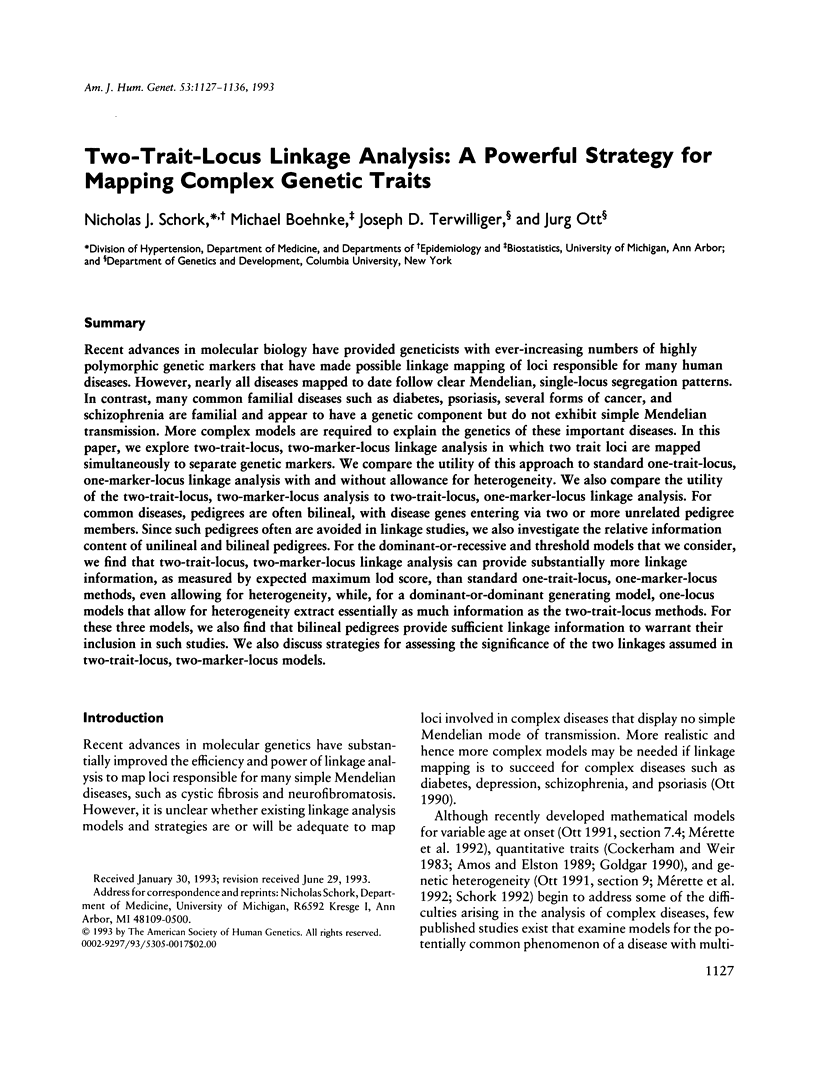
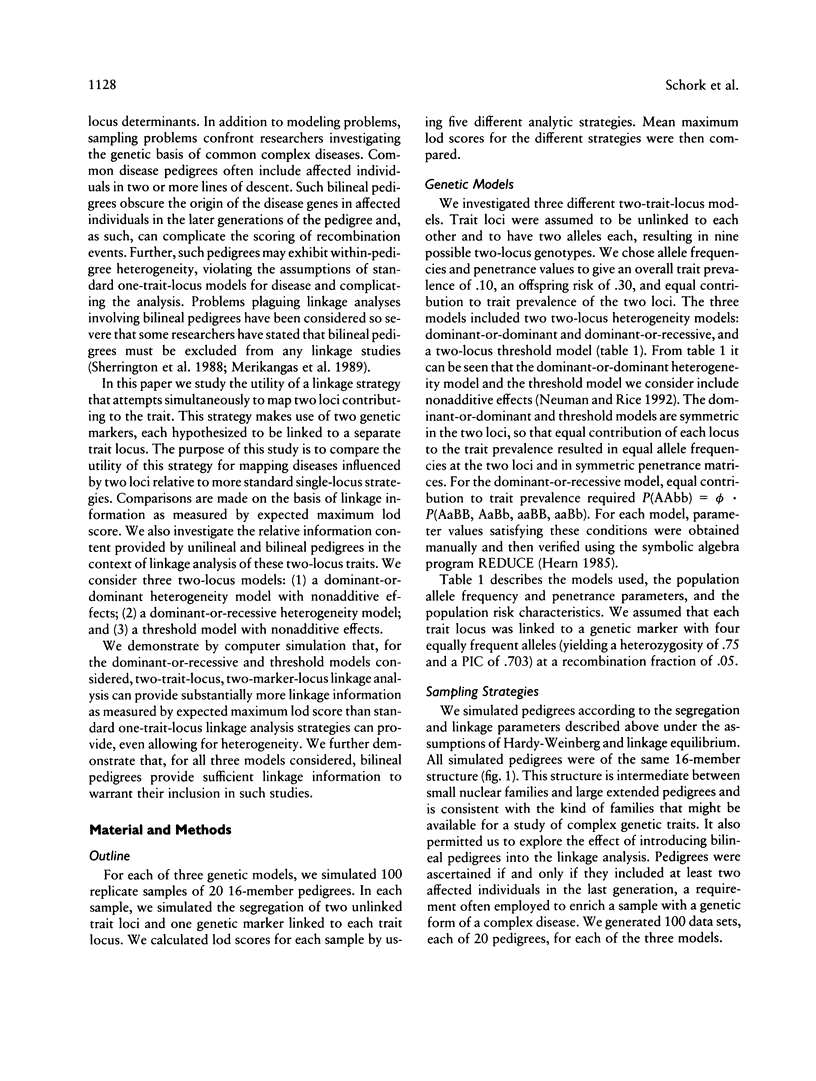
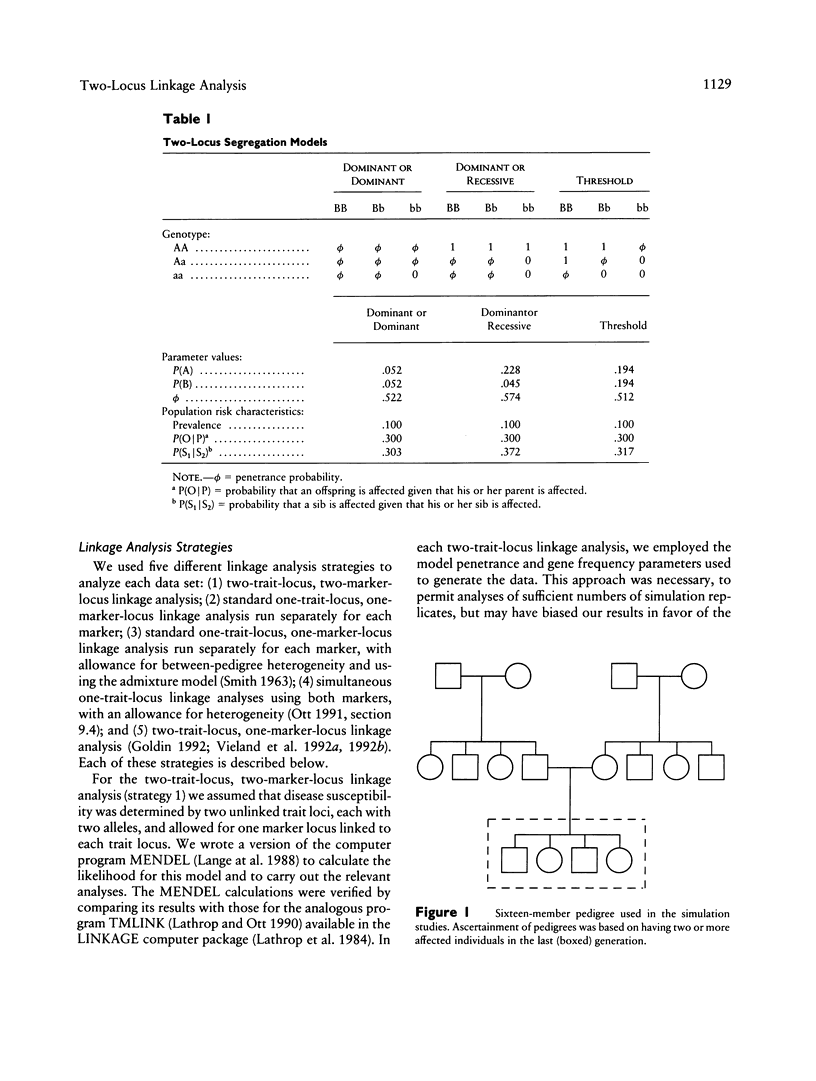
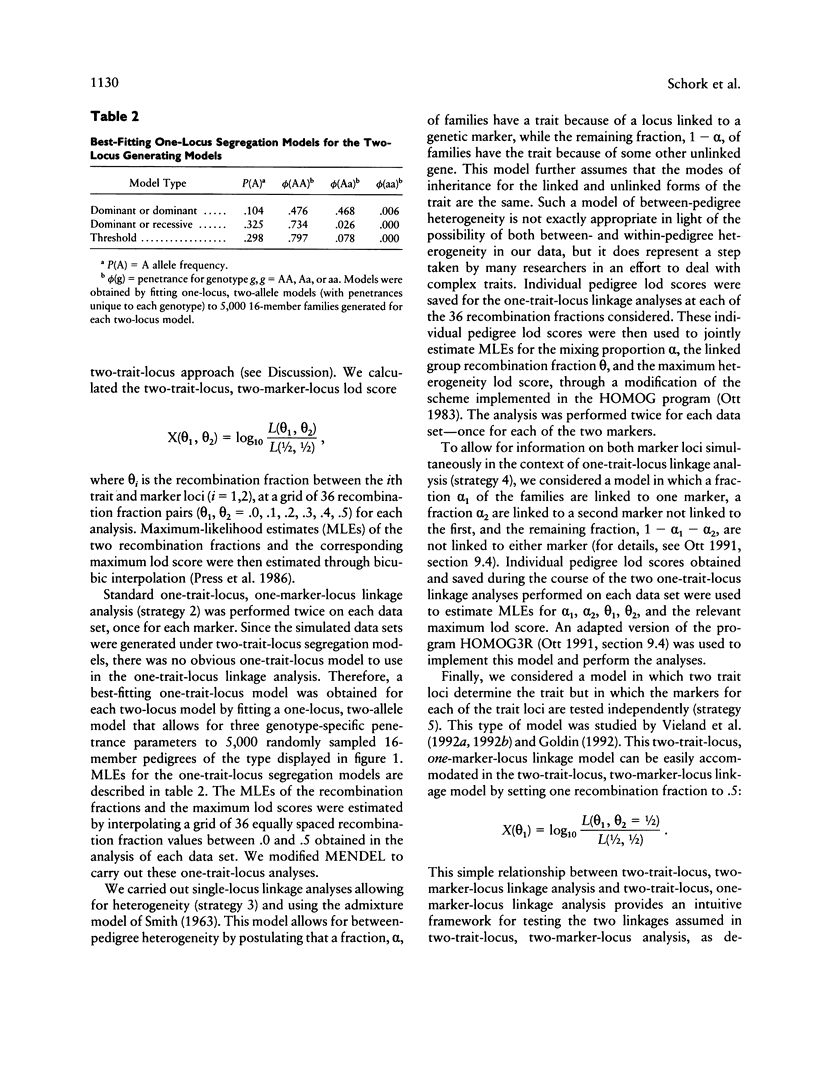
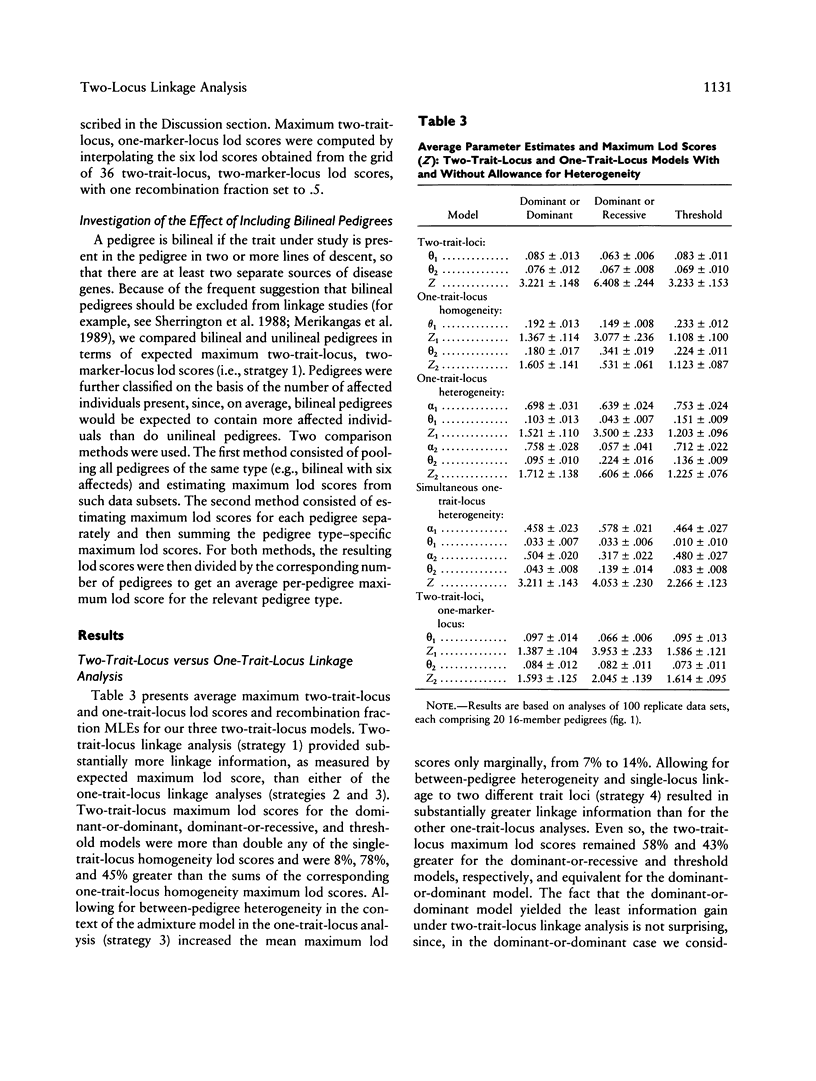
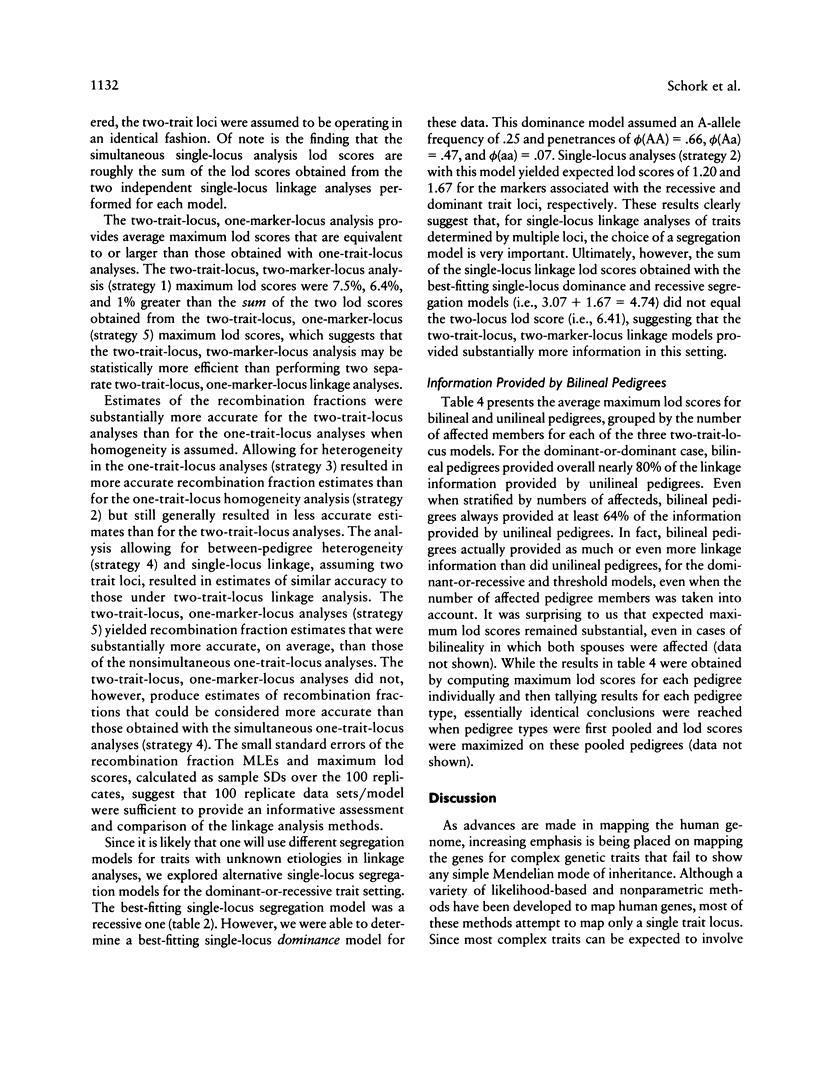
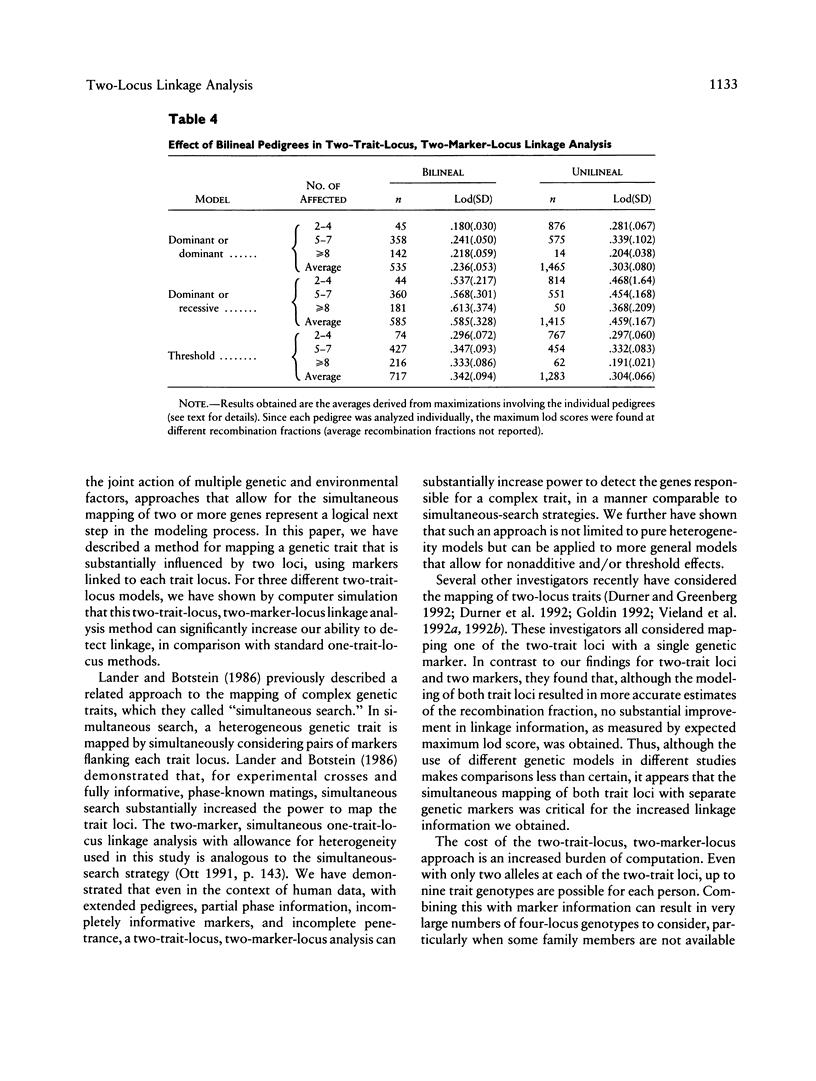
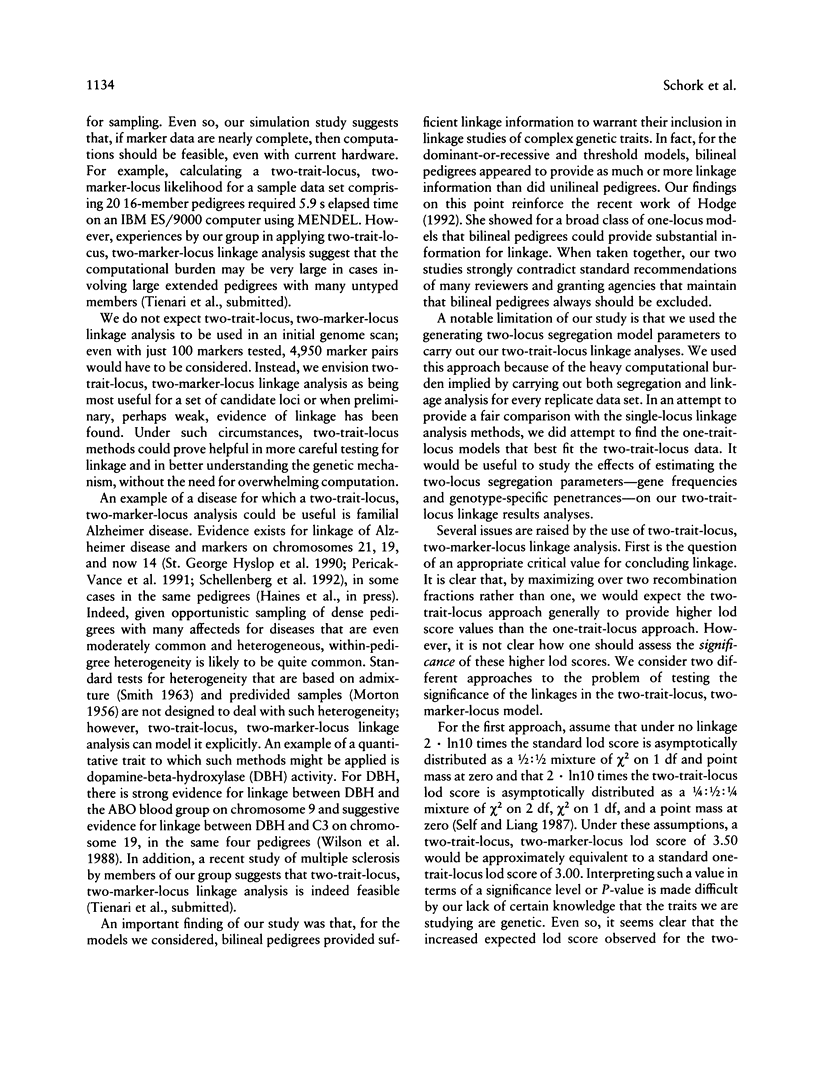
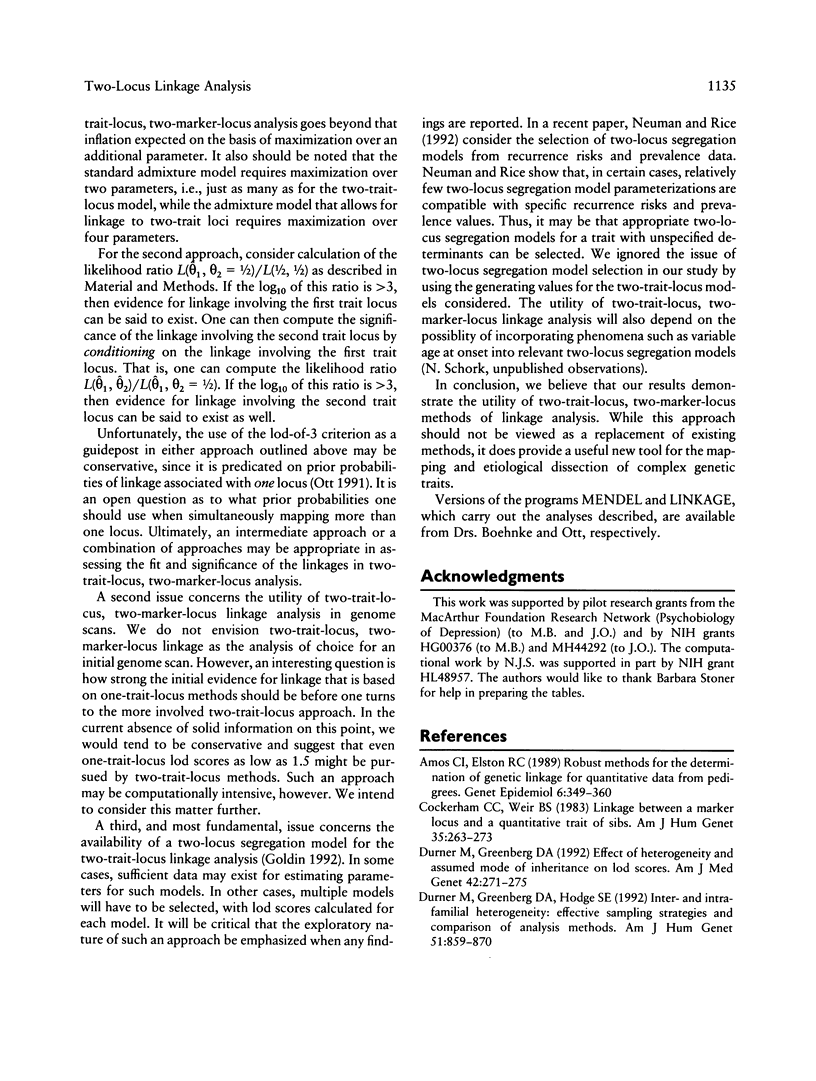
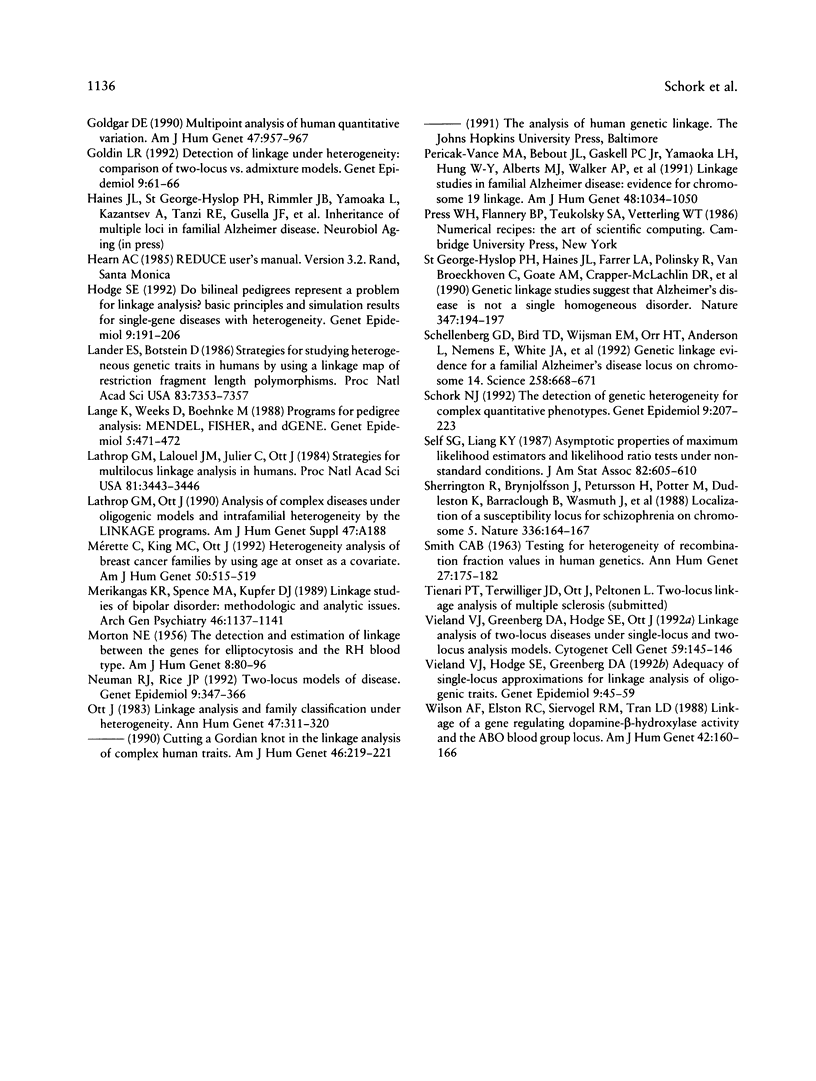
Selected References
These references are in PubMed. This may not be the complete list of references from this article.
- Amos C. I., Elston R. C. Robust methods for the detection of genetic linkage for quantitative data from pedigrees. Genet Epidemiol. 1989;6(2):349–360. doi: 10.1002/gepi.1370060205. [DOI] [PubMed] [Google Scholar]
- Cockerham C. C., Weir B. S. Linkage between a marker locus and a quantitative trait of sibs. Am J Hum Genet. 1983 Mar;35(2):263–273. [PMC free article] [PubMed] [Google Scholar]
- Durner M., Greenberg D. A. Effect of heterogeneity and assumed mode of inheritance on lod scores. Am J Med Genet. 1992 Feb 1;42(3):271–275. doi: 10.1002/ajmg.1320420302. [DOI] [PubMed] [Google Scholar]
- Durner M., Greenberg D. A., Hodge S. E. Inter- and intrafamilial heterogeneity: effective sampling strategies and comparison of analysis methods. Am J Hum Genet. 1992 Oct;51(4):859–870. [PMC free article] [PubMed] [Google Scholar]
- Goldgar D. E. Multipoint analysis of human quantitative genetic variation. Am J Hum Genet. 1990 Dec;47(6):957–967. [PMC free article] [PubMed] [Google Scholar]
- Goldin L. R. Detection of linkage under heterogeneity: comparison of the two-locus vs. admixture models. Genet Epidemiol. 1992;9(1):61–66. doi: 10.1002/gepi.1370090107. [DOI] [PubMed] [Google Scholar]
- Hodge S. E. Do bilineal pedigrees represent a problem for linkage analysis? Basic principles and simulation results for single-gene diseases with no heterogeneity. Genet Epidemiol. 1992;9(3):191–206. doi: 10.1002/gepi.1370090306. [DOI] [PubMed] [Google Scholar]
- Lander E. S., Botstein D. Strategies for studying heterogeneous genetic traits in humans by using a linkage map of restriction fragment length polymorphisms. Proc Natl Acad Sci U S A. 1986 Oct;83(19):7353–7357. doi: 10.1073/pnas.83.19.7353. [DOI] [PMC free article] [PubMed] [Google Scholar]
- Lange K., Weeks D., Boehnke M. Programs for Pedigree Analysis: MENDEL, FISHER, and dGENE. Genet Epidemiol. 1988;5(6):471–472. doi: 10.1002/gepi.1370050611. [DOI] [PubMed] [Google Scholar]
- Lathrop G. M., Lalouel J. M., Julier C., Ott J. Strategies for multilocus linkage analysis in humans. Proc Natl Acad Sci U S A. 1984 Jun;81(11):3443–3446. doi: 10.1073/pnas.81.11.3443. [DOI] [PMC free article] [PubMed] [Google Scholar]
- MORTON N. E. The detection and estimation of linkage between the genes for elliptocytosis and the Rh blood type. Am J Hum Genet. 1956 Jun;8(2):80–96. [PMC free article] [PubMed] [Google Scholar]
- Merikangas K. R., Spence M. A., Kupfer D. J. Linkage studies of bipolar disorder: methodologic and analytic issues. Report of MacArthur Foundation Workshop on Linkage and Clinical Features in Affective Disorders. Arch Gen Psychiatry. 1989 Dec;46(12):1137–1141. doi: 10.1001/archpsyc.1989.01810120079012. [DOI] [PubMed] [Google Scholar]
- Mérette C., King M. C., Ott J. Heterogeneity analysis of breast cancer families by using age at onset as a covariate. Am J Hum Genet. 1992 Mar;50(3):515–519. [PMC free article] [PubMed] [Google Scholar]
- Neuman R. J., Rice J. P. Two-locus models of disease. Genet Epidemiol. 1992;9(5):347–365. doi: 10.1002/gepi.1370090506. [DOI] [PubMed] [Google Scholar]
- Ott J. Linkage analysis and family classification under heterogeneity. Ann Hum Genet. 1983 Oct;47(Pt 4):311–320. doi: 10.1111/j.1469-1809.1983.tb01001.x. [DOI] [PubMed] [Google Scholar]
- Pericak-Vance M. A., Bebout J. L., Gaskell P. C., Jr, Yamaoka L. H., Hung W. Y., Alberts M. J., Walker A. P., Bartlett R. J., Haynes C. A., Welsh K. A. Linkage studies in familial Alzheimer disease: evidence for chromosome 19 linkage. Am J Hum Genet. 1991 Jun;48(6):1034–1050. [PMC free article] [PubMed] [Google Scholar]
- SMITH C. A. TESTING FOR HETEROGENEITY OF RECOMBINATION FRACTION VALUES IN HUMAN GENETICS. Ann Hum Genet. 1963 Nov;27:175–182. doi: 10.1111/j.1469-1809.1963.tb00210.x. [DOI] [PubMed] [Google Scholar]
- Schellenberg G. D., Bird T. D., Wijsman E. M., Orr H. T., Anderson L., Nemens E., White J. A., Bonnycastle L., Weber J. L., Alonso M. E. Genetic linkage evidence for a familial Alzheimer's disease locus on chromosome 14. Science. 1992 Oct 23;258(5082):668–671. doi: 10.1126/science.1411576. [DOI] [PubMed] [Google Scholar]
- Schork N. J. Detection of genetic heterogeneity for complex quantitative phenotypes. Genet Epidemiol. 1992;9(3):207–223. doi: 10.1002/gepi.1370090307. [DOI] [PubMed] [Google Scholar]
- Sherrington R., Brynjolfsson J., Petursson H., Potter M., Dudleston K., Barraclough B., Wasmuth J., Dobbs M., Gurling H. Localization of a susceptibility locus for schizophrenia on chromosome 5. Nature. 1988 Nov 10;336(6195):164–167. doi: 10.1038/336164a0. [DOI] [PubMed] [Google Scholar]
- St George-Hyslop P. H., Haines J. L., Farrer L. A., Polinsky R., Van Broeckhoven C., Goate A., McLachlan D. R., Orr H., Bruni A. C., Sorbi S. Genetic linkage studies suggest that Alzheimer's disease is not a single homogeneous disorder. Nature. 1990 Sep 13;347(6289):194–197. doi: 10.1038/347194a0. [DOI] [PubMed] [Google Scholar]
- Vieland V. J., Hodge S. E., Greenberg D. A. Adequacy of single-locus approximations for linkage analyses of oligogenic traits. Genet Epidemiol. 1992;9(1):45–59. doi: 10.1002/gepi.1370090106. [DOI] [PubMed] [Google Scholar]
- Vieland V., Greenberg D. A., Hodge S. E., Ott J. Linkage analysis of two-locus diseases under single-locus and two-locus analysis models. Cytogenet Cell Genet. 1992;59(2-3):145–146. doi: 10.1159/000133229. [DOI] [PubMed] [Google Scholar]
- Wilson A. F., Elston R. C., Siervogel R. M., Tran L. D. Linkage of a gene regulating dopamine-beta-hydroxylase activity and the ABO blood group locus. Am J Hum Genet. 1988 Jan;42(1):160–166. [PMC free article] [PubMed] [Google Scholar]


